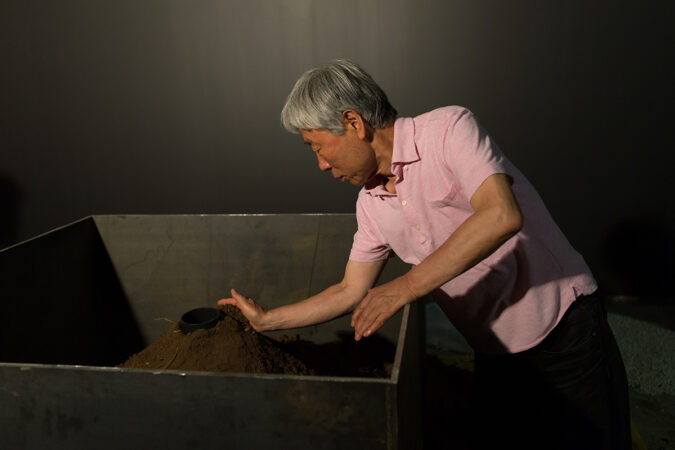Lee Ufan was born 1936, in Haman County (South Kyongsang province in Korea).
He now lives and works between Japan and France.
When he was twenty years old, Lee Ufan moved to Japan where he studied philosophy before beginning his artistic career. He was one of the founders and main theoretician of Mono-Ha, a japanese artistic movement that appeared in 1968. Similarly to many other artists in europe and the united states at that time, the artist actively participated in the deep questioning of the foundations and definitions of art.
The artist’s exhibition at the CCCOD was deeply inspired by the original darkness of the exhibition space that was specifically chosen for his new project: the black gallery. The spectator wanders across six different rooms, that all display essential features of the artist’s vocabulary: sculptures made out of stones and industrial metal; paintings with traces of a unique gesture… Forming a pathway of shadows and light, each installation is an invitation to encounter and meditation.
Lee Ufan’s work is characterised by minimal intervention on space and matter; the artist follows the idea that looking at an object, choosing it, and moving it around is already part of the creation process. The artist bases his research on the relationship between what is created, and what already exists. He assigns an important role to emptiness and the resonance it creates between objects, which become just as valuable as the object itself. Lee Ufan develops an “art of encounter” that creates bridges between the visible and the invisible, between men and the infinite space around us. Through the use of simple materials, Lee Ufan’s silent art provides the spectator with a body and metaphysical experience.
From the “Pressentiment” exhibition press release, 2017


